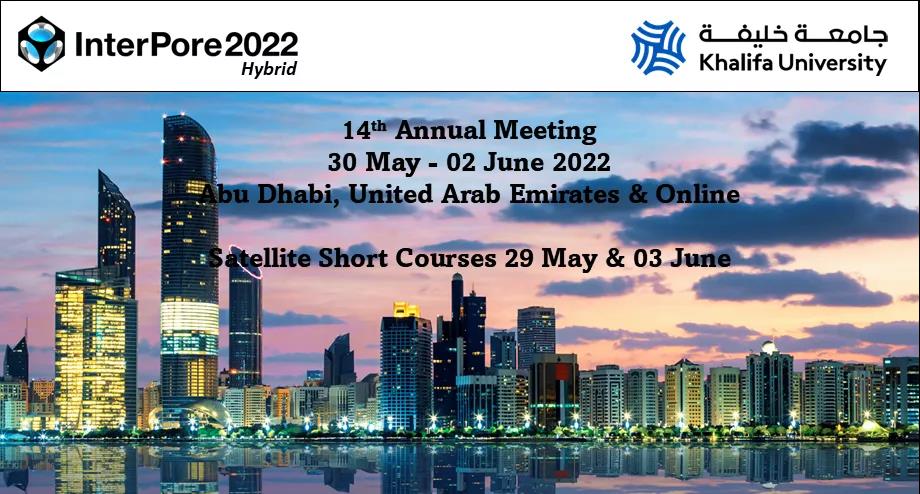Experimental investigation and multi-scale simulations of CO₂ foam flooding for enhanced oil recovery
Abstract view|302|times PDF download|185|times
Abstract
CO₂ flooding in low-permeability and tight oil reservoirs is frequently compromised by severe gas channeling, which significantly reduces oil recovery and sweep efficiency. While foam flooding can effectively mitigate CO₂ channeling by trapping CO₂ within lamellae, its stability deteriorates under harsh high-temperature, high-salinity reservoir conditions, compromising its effectiveness. Furthermore, foam flow in porous media involves constant foam generation, collapse and propagation, making its flow behaviors difficult to predict. To address these challenges, a new foaming agent with satisfactory regenerative capability is developed to maintain gas mobility control under harsh reservoir conditions. The multiphase flow behaviors during CO₂ foam flooding are predicted using pore network modeling to obtain the corresponding relative permeability curves, which are further incorporated into a reservoir simulator to evaluate field-scale foam flooding performances, as well as optimize injection strategies. This multi-scale modeling approach establishes a quantitative link between pore-scale foam behaviors and field-scale oil recovery performances, offering new insights into carbon capture and utilization with enhanced oil recovery in low-permeability and tight reservoirs.
Document Type: Original article
Cited as: Peng, M., Zhou, Y., Yang, J., Wang, J., Lin, Z., Zhao, J. Experimental investigation and multi-scale simulations of CO₂ foam flooding for enhanced oil recovery. Capillarity, 2025, 16(2): 39-50. https://doi.org/10.46690/capi.2025.08.02
Keywords
Full Text:
PDFReferences
An, S., Yao, J., Yang, Y., et al. Influence of pore structure parameters on flow characteristics based on a digital rock and the pore network model. Journal of Natural Gas Science and Engineering, 2016, 31: 156-163.
Blunt, M. J., Bijeljic, B., Dong, H., et al. Pore-scale imaging and modelling. Advances in Water Resources, 2013, 51: 197-216.
Cai, J., Jin, T., Kou, J., et al. Lucas-Washburn equation-based modeling of capillary-driven flow in porous systems. Langmuir, 2021, 37(5): 1623-1636.
Cai, J., Sun, S., Wang, H. Current advances in capillarity: Theories and applications. Capillarity, 2023, 7(2): 25-31.
Cai, L., Wu, J., Zhang, M., et al. Investigating the potential of CO2 nanobubble systems for enhanced oil recovery in extra-low-permeability reservoirs. Nanomaterials, 2024, 14(15): 1280.
Chen, H., Wei, B., Zhou, X., et al. Theory and technology of enhanced oil recovery by gas and foam injection in complex reservoirs. Advances in Geo-Energy Research, 2025, 15(3): 181-184.
Chen, M., Rossen, W., Yortsos, Y. C. The flow and displacement in porous media of fluids with yield stress. Chemical Engineering Science, 2005, 60(15): 4183-4202.
Dubey, S., Majumder, S. K. Stability analysis of CO2 microbubble for CO2 sequestration and mobility control in enhanced oil recovery. Chemical Engineering Journal, 2024, 500: 156595.
Hamza, A., Hussein, I. A., Al-Marri, M. J., et al. CO2 enhanced gas recovery and sequestration in depleted gas reservoirs: A review. Journal of Petroleum Science and Engineering, 2021, 196: 107685.
Ji, B., Fang, J. An overview of efficient development practices at low permeability sandstone reservoirs in China. Energy Geoscience, 2023, 4(3): 100179.
Kharabaf, H., Yortsos, Y. C. Pore network model for foam formation and propagation in porous media. SPE Journal, 1998, 3(1): 42-53.
Kumar, S., Mandal, A. A comprehensive review on chemically enhanced water alternating gas/CO2 (CEWAG) injection for enhanced oil recovery. Journal of Petroleum Science and Engineering, 2017, 157: 696-715.
Laidlaw, W. G., Wilson, W. G., Coombe, D. A. A lattice model of foam flow in porous media: A percolation approach. Transport in Porous Media, 1993, 11(2): 139-159.
Lin, Z., Kuang, Y., Li, W., et al. Research status and prospects of CO2 geological sequestration technology from onshore to offshore: A review. Earth-Science Reviews, 2024, 258: 104928.
Li, X., Yang, Z., Li, S., et al. Reservoir characteristics and effective development technology in typical low-permeability to ultralow-permeability reservoirs of China National Petroleum Corporation. Energy Exploration & Exploitation, 2021, 39(5): 1713-1726.
Ma, G., Gong, Q., Xu, Z., et al. The interfacial dilational rheology of surfactant solutions with low interfacial tension. Molecules, 2025, 30(3): 447.
Meakin, P., Tartakovsky, A. M. Modeling and simulation of pore-scale multiphase fluid flow and reactive transport in fractured and porous media. Reviews of Geophysics, 2009, 47(3): 2008RG000263.
Prakash, S., Joshi, D., Ojha, K., et al. Enhanced oil recovery using polymer alternating CO2 gas injection: Mechanisms, efficiency, and environmental benefits. Energy & Fuels, 2024, 38(7): 5676-5689.
Qin, C., van Brummelen, H. A dynamic pore-network model for spontaneous imbibition in porous media. Advances in Water Resources, 2019, 133: 103420.
Rahman, A., Shirif, E., Torabi. F. Nanoparticle-stabilized CO2 foam flooding for enhanced heavy oil recovery: A microoptical analysis. Petroleum, 2024, 10(4): 696-704.
Rasmussen, L., Fan, T., Rinehart, A., et al. Carbon storage and enhanced oil recovery in Pennsylvanian Morrow Formation clastic reservoirs: Controls on oil-brine and oil-CO2 relative permeability from diagenetic heterogeneity and evolving wettability. Energies, 2019, 12(19): 3663.
Ravera, F., Loglio, G., Kovalchuk, V. I. Interfacial dilational rheology by oscillating bubble/drop methods. Current Opinion in Colloid & Interface Science, 2010, 15(4): 217-228.
Roslin, A., Pokrajac, D., Wu, K., et al. 3D pore system reconstruction using nano-scale 2D SEM images and pore size distribution analysis for intermediate rank coal matrix. Fuel, 2020, 275: 117934.
Xu, T., Tian, H., Zhu, H., et al. China actively promotes CO2 capture, utilization and storage research to achieve carbon peak and carbon neutrality. Advances in Geo-Energy Research, 2022, 6(1): 1-3.
Yang, J., Zhao, J., Zeng, F. Modeling foam propagation in pore network with designated pressure constraints. Fuel, 2023a, 331: 125772.
Yang, Z., Sun, Q., Deng, H. Multi-scenario modeling and estimating of carbon intensity in China’s CO2-EOR oilfields. Petroleum Science Bulletin, 2023b, 8(2): 247-258. (in Chinese)
Youssif, M. I., Piri, M., Goual, L. Review on foam-assisted gas injection in fractured carbonates for enhanced oil recovery. Energy & Fuels, 2024, 38(17): 15887-15912.
Zhang, C., Wang, P., Song, G. Study on enhanced oil recovery by multi-component foam flooding. Journal of Petroleum Science and Engineering, 2019, 177: 181-187.
Zhang, Y., Liu, Q., Ye, H., et al. Nanoparticles as foam stabilizer: Mechanism, control parameters and application in foam flooding for enhanced oil recovery. Journal of Petroleum Science and Engineering, 2021, 202: 108561.
Zhang, Y., Wang, Y., Xue, F., et al. CO2 foam flooding for improved oil recovery: Reservoir simulation models and influencing factors. Journal of Petroleum Science and Engineering, 2015, 133: 838-850.
Zhang, Y., Yang, S., Bi, L., et al. A technical review of CO2 flooding sweep-characteristics research advance and sweep-extend technology. Petroleum Science, 2025, 22(1): 255-276.
Zhao, J., Liu, Y., Qin, F., et al. Pore-scale fluid flow simulation coupling lattice Boltzmann method and pore network model. Capillarity, 2023a, 7(3): 41-46.
Zhao, J., Torabi, F., Yang, J. Role of viscous forces in foam flow in porous media at the pore level. Industrial & Engineering Chemistry Research, 2021, 60(7): 3156- 3173.
Zhao, J., Yang, J., Zeng, F. Complex displacement behavior during foaming gas drainage in 2D microfluidic networks. Fuel, 2023b, 344: 128071.
Zhou, G., Li, Y., Liu, Y., et al. Preparation of environment-friendly gel-protein foam and its fire suppression performance for lithiumion batteries. Fuel, 2025, 384: 13397.
Refbacks
- There are currently no refbacks.
Copyright (c) 2025 The Author(s)

This work is licensed under a Creative Commons Attribution-NonCommercial-NoDerivatives 4.0 International License.


